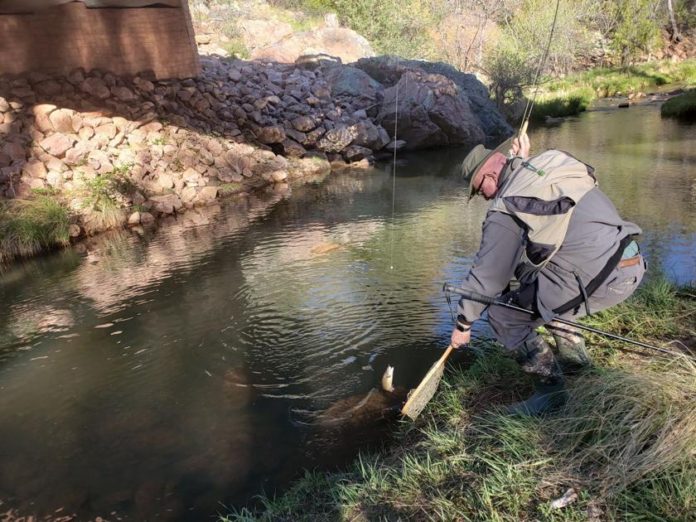Fly fishers are a proud bunch, steeped in tradition. We enjoy trying to fool fish with flies we tied to match the real bugs in the creek or the lake. In fact, early in the history of fly-fishing, the only “proper” way to entice a trout was with a dry fly floating on top of the water. There are still many that prefer that method of taking trout over any other.
I am not of the dry fly-only crowd and am more pragmatic about my fly-fishing. The aquatic insects that dominate a trout’s diet are in front of the fish in the water about 95% of their life cycle, so my fly selection is almost always a fly that imitates this underwater phase of life.
To accomplish this in creeks and lakes, a common practice is to use what we call an indicator. No self-respecting fly fisher would ever call an indicator a bobber, but that is really what it is.
In a stream, an angler will often cast upstream and attempt to drift his fly downstream, simulating a dislodged aquatic insect in the current. This can be accomplished without an indicator, but there are clear advantages to using an indicator floating above your offering.
Trout will grab at anything that they think might be food drifting downstream. The closer an angler can match their natural food and present it in a way that doesn’t alarm the fish, the better chance you have of enticing a bite.
The challenge is that trout will quickly spit out what they decide is not food. In well over 50 years of fishing under the surface for trout, I have used a very quick hook set when I either see a fish take my fly, or see the indicator move signaling a possible grab of the fly drifting below.
When using an indicator, do not assume that a fish will take the indicator under water before you set the hook. I will set the hook if the indicator does anything odd. It might stop drifting briefly, move to the side, or jiggle, and it might indeed go under water. Any of those will prompt me to give a six- to eight-inch quick pull downstream parallel to the water to set the hook. If in doubt, assume it is a fish and set the hook.
That short strike parallel to the water helps me in two ways. If it was simply the fly ticking along bottom, that hook set allows the fly to keep drifting through productive water. The parallel pull along the water keeps the fly from going airborne and catching a tree or bush if it really wasn’t a fish.
The indicator I use in small creeks or on Rim Country lakes is a very light foam pinch-on style. My preference for this type is that it is so light that it doesn’t affect my cast, and it allows me to notice the slightest movement of my fly below the indicator. If I need to add weight to my presentation to get the fly down deeper that could cause the foam indicator to sink under the surface, then I will switch to a small air-filled plastic indicator or a cork indicator.
I will use these types in faster, deeper water where I want to be sure that my indicator is floating high, and I don’t have to worry about the splash of the indicator hitting the surface scaring fish away.
I often will use an indicator when I am fishing a wooly bugger or hard to see fly downstream. In those situations I am not relying on the indicator to tell me if a fish grabbed the fly, but rather as a spotter to tell me where my fly is in relation to a place where I think a trout may be hiding. In this case, the indicator three or four feet up my line tells me how far I can work my fly downstream so it dances right in front of the location that I am targeting.
The small air filled or cork indicators are also perfect bobbers for bait fishers that are interested in perhaps releasing their fish. Because they are more sensitive to a fish taking the bait than a large bobber, it is often possible to set the hook before the fish has actually swallowed the bait and allow for a quick release of the fish.
This is what I use with my young grandkids all the time. These indicators can handle a split shot to get the bait a little further out, or they work great with just a worm or mealworm that often entices a grab and a jiggle of the indicator even before the bait completely settles.
Credit: Source link































